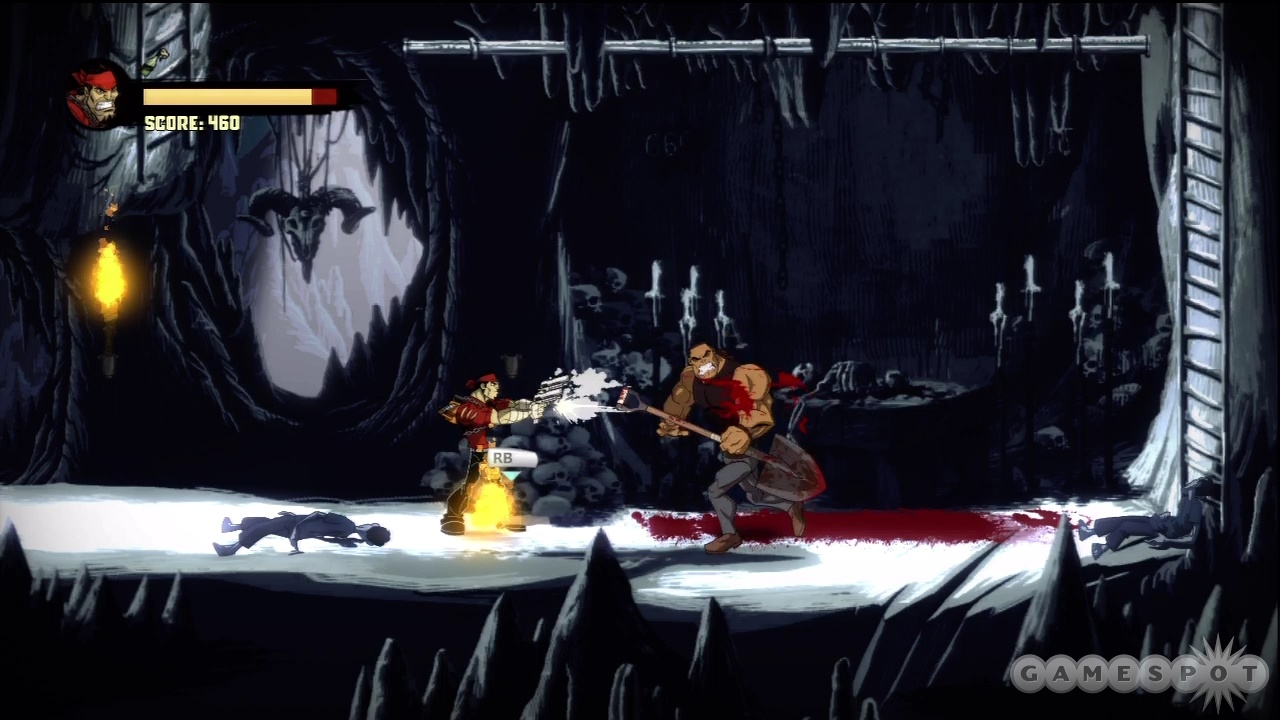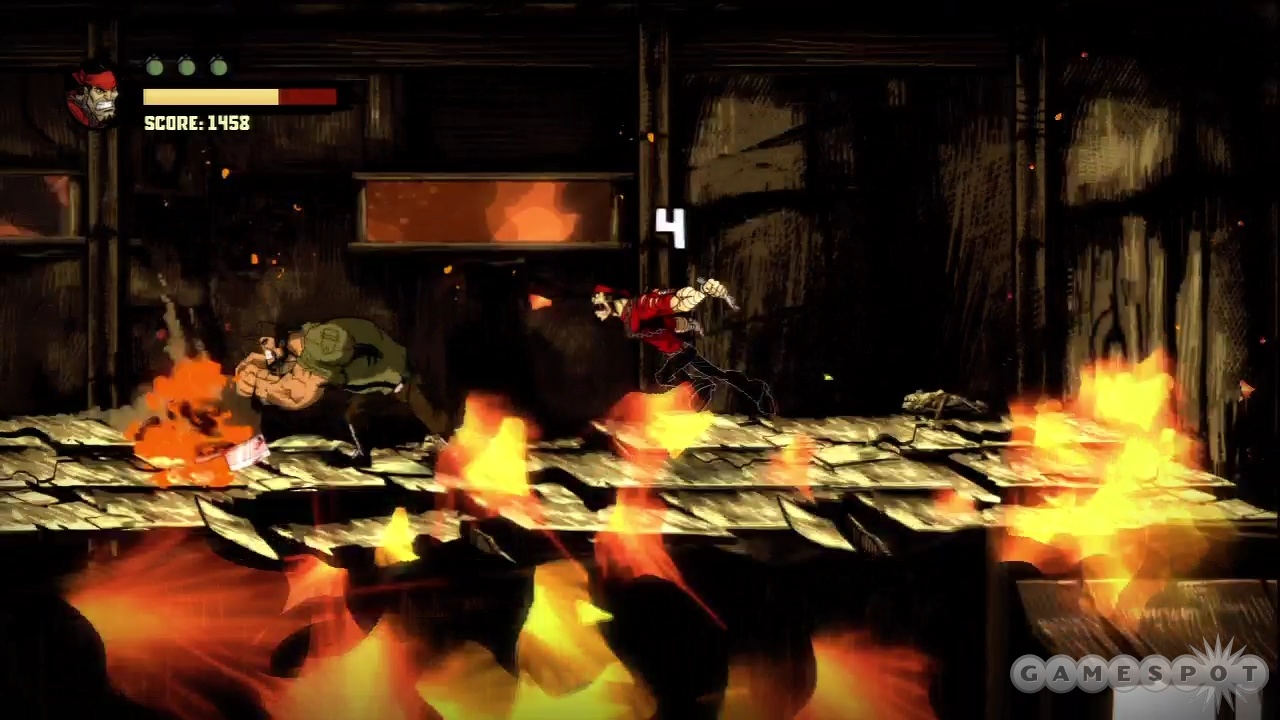Shank, much like the tool it was named after, was a quick and bloody game. There certainly were some rough edges to work out, but it was still an effective brawler in its own right. The sequel doesn't stray far from the path set out by its predecessor in that regard and offers even more blood-soaked two-dimensional carnage. While certain refinements have been made, they are accompanied by puzzling sacrifices that were less necessary. Shank 2's moment-to-moment gameplay may be improved, but the whole is less than the sum of its parts.
Far from the Tarantino-esque revenge plot of the first game, Shank 2 begins with its titular antihero on a South American vacation. A military dictatorship is oppressing its people, but Shank is none too bothered until an estranged friend from his past is kidnapped by the regime. What follows is a gruesome romp through shanty towns, jungles, swamps, and industrial yards with little narrative justification tying them together, aside from the fact that Shank just happens to be there in time to kill everyone in sight. Like the first game, Shank 2 is a visual treat with high-quality 2D sprites animating each blood splatter and severed limb in excruciating detail. However, all pretense for plot is lost as Shank murders his way through villages of Amazonian strippers and cannibal tribesmen with no connection to the ruthless dictator or Shank's kidnapped friend. Their presence clearly serves the purpose of adding enemy diversity, but without any sense of cohesion in the story, they become little more than palette swaps.
Thankfully, Shank's methods for dealing death have been enhanced since his first outing. Light, heavy, and ranged attacks flow seamlessly together as both your combo and body count rise. The effect is quicker combat, even though your foes still appear in overwhelming numbers. Blocking has been swapped out for a rolling dodge, which gives combat a more kinetic feel. However, attempts to roll out of harm's way have an irritating tendency to land you in front of a different enemy that is ready to pounce due to the roll's limited range.

The largest change in combat comes from weapon variety. Before each level, you can select your starting loadout from a limited arsenal of unlocked weapons. These include your standard chainsaw, machete, and sledgehammer. However, once you're inside a level, there are a wide range of heavy weapons to wield, from shovels and flaming torches to riot shields and even the occasional fish. These weapons are frequently dropped by enemies and break after a limited number of uses, acting more as power-ups that add temporary variety to the combat. However, aside from memorizing enemy patterns, there is no way to plan for which new weapons you can access in any given fight. The dropped weapons can also become quite cluttered in the level, which causes more than a few deaths as you accidentally pick up a frying pan or one of three other weapons that are lying next to a much-needed health item.
The constant weapon pickups rise in importance due to the new inability to change primary weapons during levels. The first game allowed you to cycle between Shank's various heavy weapons and firearms at will, ensuring you always had the right tool because you had access to all of them at all times. It's a step back, then, that Shank 2 locks you to your starting loadout without the ability to switch during gameplay. You can always change your loadout after dying, but with the first game's weapon select system, those deaths could have been prevented in the first place.
Aside from the combat, platforming has been significantly scaled back in Shank 2. Slide and grapple points are few and far between, with a satisfying pounce from a rooftop an exceedingly rare occurrence. It makes the overall pace of the game smoother, with streamlined levels and fewer noncombat obstacles, but it removes some much-needed variety from gameplay that helped the original Shank stand out from competing brawlers.

Should you tire of the campaign, there is also the new co-op Survival mode. You and a friend must defend three stockpiles from waves of enemies and bombers, and tossing an enemy in the air for your partner to pounce on is a simple and violent joy. Various unlockable characters have unique stats in Survival mode, and between waves, you can purchase power-ups and health items, which makes it a rewarding co-op experience with fierce competition on the leaderboards.
Klei Entertainment set out to refine its gory brawler with Shank 2, and in regards to quickened combat and expanded multiplayer options, it has succeeded. But in sharpening Shank's blade, it has chipped off what made the original game unique in the brawler genre. The story is a jumbled, disconnected mess rather than a stylish, Tarantino-inspired mess. Combat has been neutered with the inability to swap primary weapons at will, and the primarily flat level layouts feel bland compared to Shank's parkour rooftop battles. Shank 2 is still a perfectly competent brawler, but it lacks that spark to make it stand out in the genre, even compared to its predecessor.
Editor's Note: This review originally stated that the campaign was playable cooperatively, when it is not. GameSpot regrets the error.